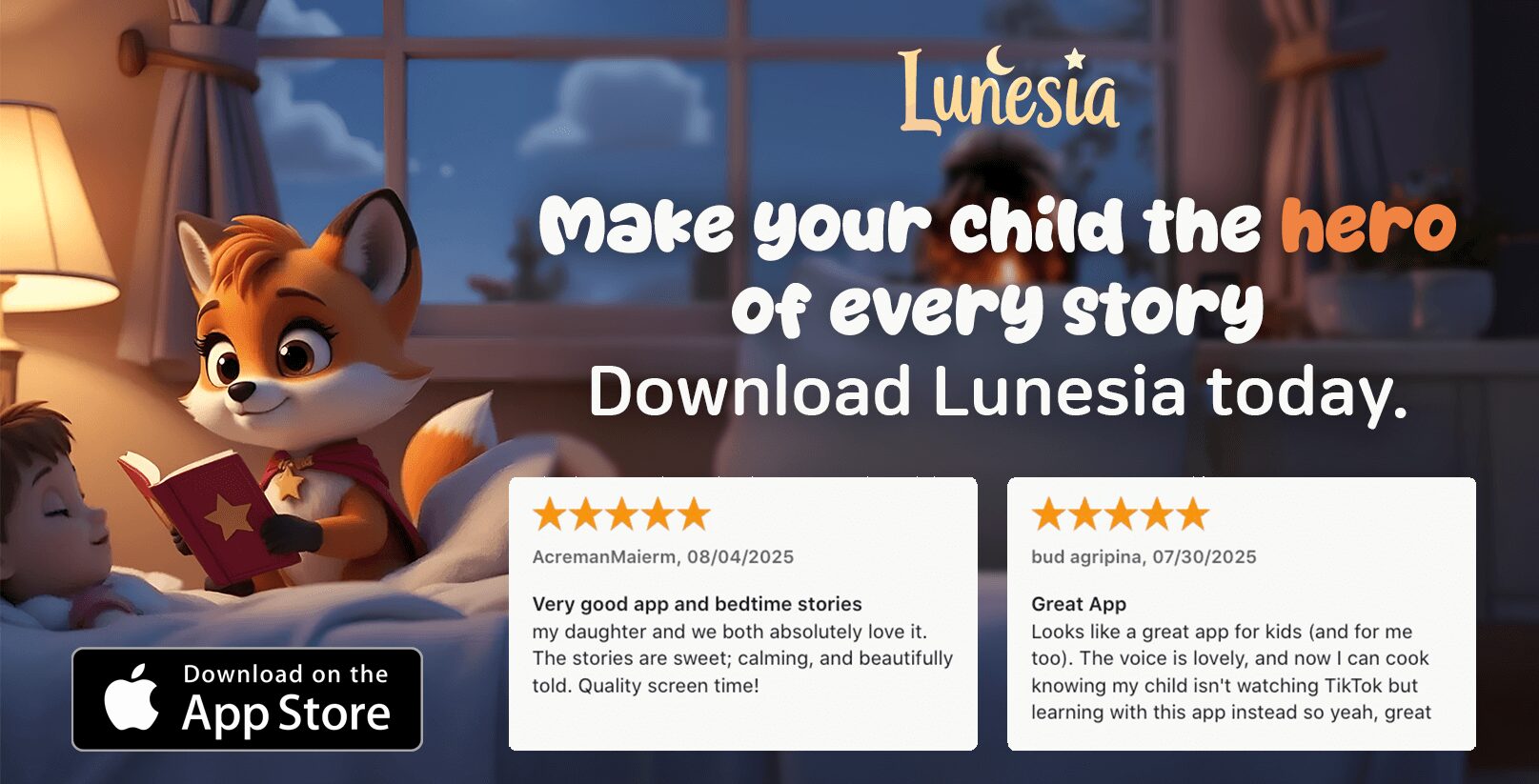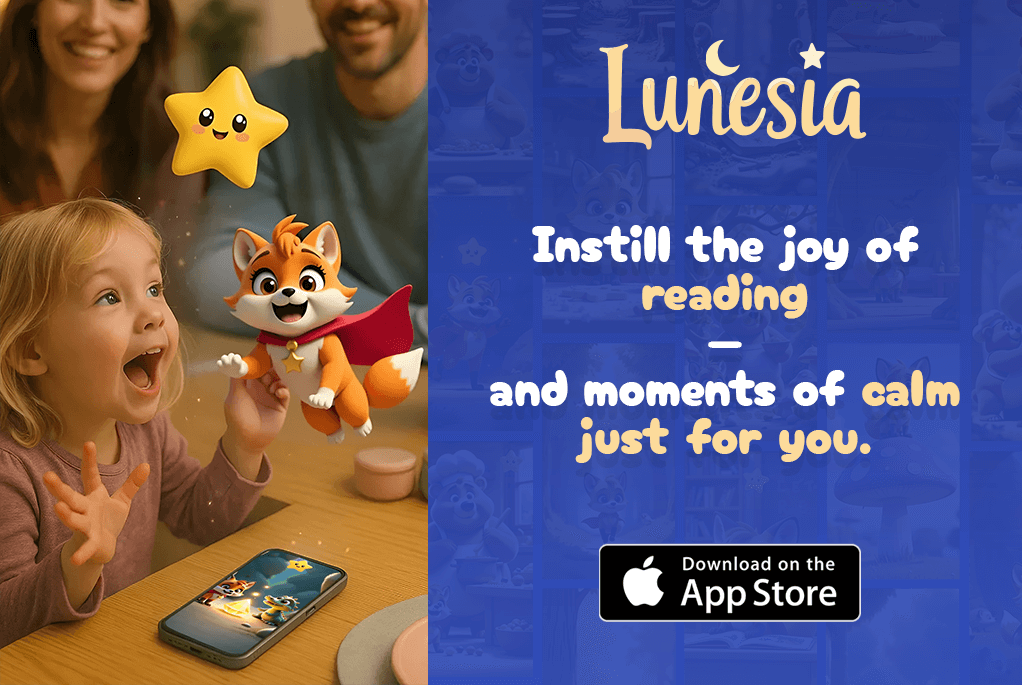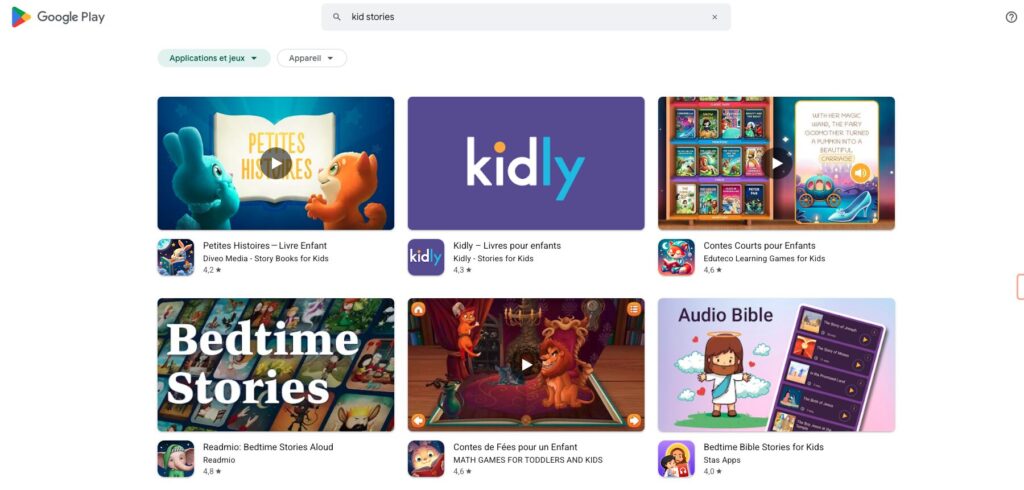I’ll never forget the moment my niece, Emma, went from saying “ball” to telling me, “Auntie, the red ball rolled under the couch!” It was like watching a tiny explorer unlock a new world. That’s the magic of storytelling—it transforms babble into meaningful sentences, one word at a time.

As a teacher with over 15 years of experience, I’ve seen how interactive storytelling can shape a child’s development. At Little Scholars, we call it “language nutrition”—feeding young minds with rich, engaging tales that spark curiosity and learning.
Parents, you’re the first storytellers in your child’s life. Your voice, your words, and your enthusiasm lay the foundation for their journey into the world of communication. It’s not always a straight path, but it’s a playful, rewarding one.
In this guide, I’ll walk you through the stages of language growth, from infancy to preschool years, and share research-backed methods to help your child thrive. Let’s embark on this adventure together!
Why Storytelling is Essential for Language Growth
Storytelling isn’t just entertainment; it’s a bridge to understanding and communication. When children hear stories, their brains light up in ways that passive listening can’t match. Research shows that storytelling activates seven times more brain regions, helping kids process and retain information better.
The Role of Stories in Early Language Development
From the moment children hear their first tale, their brains begin forming neural pathways for language processing. Bedtime stories, for example, create a foundation for comprehension and expression. Character dialogues in stories model conversational turn-taking, teaching kids how to engage in meaningful exchanges.
Studies also highlight the power of story grammar. The structure of narratives—beginning, middle, and end—helps children understand sentence sequencing. For instance, repetitive phrases like “I’ll huff and I’ll puff” build prediction skills, making it easier for kids to anticipate what comes next.
How Stories Build Vocabulary and Grammar Skills
Stories are a treasure trove of new words and phrases. According to The T.E.A. Center, kids retain 68% more new words from contextual stories compared to flashcards. Themes in stories also create semantic networks, connecting related vocabulary in a child’s mind.
Take Goldilocks, for example. The tale introduces adjectives like “too hot,” “too cold,” and “just right,” helping kids grasp comparisons. An Algerian study found that students exposed to storytelling showed 40% better tense conjugation, proving its effectiveness in teaching grammar.
| Benefit | Example |
|---|---|
| Vocabulary Expansion | Learning words like “enormous” and “tiny” from stories. |
| Grammar Skills | Understanding sentence structure through repetitive phrases. |
| Comprehension | Predicting outcomes based on story patterns. |
As parents, your role is to make storytelling a natural part of your child’s day. Avoid quiz-style questions and let them discover new words and ideas organically. Remember, every story you share is a step toward their language development.
Stages of Language Development and Storytelling
Every child’s journey with words is unique, and storytelling plays a pivotal role in shaping their communication skills. From infancy to preschool, each stage offers opportunities to nurture their ability to understand and express. Let’s explore how storytelling can support these stages.
Infancy (0-12 Months): Laying the Foundation
In the first year, babies are absorbing sounds and rhythms. Use melodic narratives and simple animal sound stories to engage their attention. The T.E.A. Center calls this “language bathing”—surrounding infants with rich, rhythmic phrases that build their auditory skills.
Touch-and-feel books are perfect for this stage. Let them explore textures while you describe the words and images. Research shows that simple actions like holding the book and pointing to pictures lay the foundation for future learning.
Toddlerhood (1-3 Years): Expanding Vocabulary
Toddlers are eager to name the world around them. Introduce the “word storm” method—labeling everything in a storybook. For example, “The bear is… [let your child fill in] BIG!” This builds their vocabulary and confidence.
Books like Sandra Boynton’s are excellent for this stage. They combine simple phrases with engaging illustrations. Studies show that toddlers exposed to storytelling during this critical window (18-24 months) absorb grammar rules more effectively through repetition.
Preschool Years (3-5 Years): Crafting Sentences
Preschoolers are ready to craft their own sentences. Use “story reboots”—retelling tales with new details. Ask open-ended questions like, “What do you think happens next?” This enhances their comprehension and creativity.
By age five, a child can experience over 54,750 minutes of brain food through books. Encourage them to play the “language detective” game, spotting new words in their favorite stories. This makes learning fun and interactive.
Effective Storytelling Techniques for Parents
Parents often ask me how to make storytelling more engaging for their kids. The secret lies in using the right techniques to spark their imagination and build their skills. Let’s explore some practical methods that can turn storytelling into a powerful tool for learning.

Using Expressive Language and Tone
One of the best ways to captivate your child’s attention is through expressive language. Try “voice mapping,” where you assign unique tones to different characters. For example, a deep voice for a bear or a squeaky one for a mouse. This approach makes the story come alive and keeps kids engaged.
Another tip is to exaggerate emotions. If a character is sad, let your voice reflect that. This helps children connect with the story on a deeper level. Remember, your enthusiasm is contagious!
Incorporating New Words and Phrases
Introducing new words is a great way to expand your child’s vocabulary. Use the “story spice rack” concept—always add one or two fresh ingredients to your tales. For instance, instead of saying “big,” try “gigantic” or “enormous.” This technique, known as “word layering,” makes learning fun and natural.
Printable emotion cards can also be a helpful tool. Let your child act out feelings like happiness or surprise while you narrate. This adds an interactive element to the storytelling process.
Encouraging Repetition and Participation
Repetition is key to learning. Use familiar phrases or songs in your stories to help kids remember them. For example, “The wheels on the bus go round and round” can be a fun way to reinforce words and rhythms.
Encourage participation by asking open-ended questions like, “What do you think happens next?” This not only boosts their creativity but also builds their confidence in expressing ideas. A parent once shared, “Our ‘silly voices night’ doubled Maya’s sentence length!”
By using these techniques, you can create a storytelling experience that’s both educational and enjoyable. Remember, every story you share is a step toward your child’s development.
Interactive Storytelling Activities for Kids
Interactive storytelling turns reading into a dynamic adventure that kids can’t resist. By blending creativity and engagement, these activities make learning fun and memorable. Let’s explore some hands-on ideas to bring stories to life.
Acting Out Characters and Scenes
One of the best ways to spark imagination is by acting out characters and scenes. Create a “story costume box” filled with hats, scarves, and stuffed animals. Encourage your child to dress up and play the role of their favorite character.
Try “story yoga,” where kids physically act out plot points. For example, stretch like a giraffe or stomp like a dinosaur. This not only boosts engagement but also helps them connect with the story on a deeper level.
Creating Personalized Stories Together
Personalized stories are a fantastic way to nurture creativity. Use the T.E.A. Center’s “hero’s journey” template, where your child’s toys become the main characters. For example, their teddy bear could embark on a space adventure.
Another fun idea is the “mix-up tales” game. Combine elements from different stories, like Red Riding Hood in space or Cinderella at the zoo. This encourages kids to think outside the box and explore new scenes.
Using Props and Visual Aids
Props and visual aids can transform storytelling into a multi-sensory experience. Paint “story stones” with vocabulary words or images. Use them to build a narrative as your child picks each stone.
Sidewalk chalk is another great tool for “story mapping.” Draw scenes from a book and let your child walk through the story. This interactive approach makes learning tangible and exciting.
Remember, messy play is better than perfect production. Let your child’s imagination run wild, and don’t worry about getting everything right. For more activities, check out this guide on making storytelling an unforgettable experience.
Building a Language-Rich Environment at Home
Creating a home filled with words and wonder starts with small, intentional steps. A language-rich environment doesn’t require a fancy setup—just creativity and consistency. By weaving words into daily life, you can nurture your child’s love for reading and comprehension.

Daily Storytelling Routines
Start with the “20-Minute Miracle”—a minimum daily story interaction. Whether it’s bedtime tales or morning adventures, consistency builds familiarity. Designate literacy zones like a cozy reading nook or a kitchen with word magnets. These spaces encourage exposure to words in fun, unexpected ways.
At Little Scholars, we use a “book rotation” system to keep content fresh and exciting. Swap out books weekly to introduce new themes and maintain curiosity. This approach ensures your child’s reading journey stays dynamic and engaging.
Integrating Stories into Playtime
Turn playtime into a learning adventure with the “play narration” technique. As your child builds a block tower, describe the process: “The red block goes on top of the blue one!” This method blends playtime with comprehension, making learning seamless.
Use a “story sparks” jar for quick imagination starters. Fill it with prompts like “What if the teddy bear could talk?” or “Imagine a castle in the clouds.” These ideas transform ordinary moments into extraordinary tales.
Choosing the Right Books for Each Stage
Selecting books tailored to your child’s stages is key. For infants, opt for touch-and-feel books that stimulate sensory exploration. Toddlers thrive with rhyming tales that build rhythm and vocabulary. Preschoolers benefit from plot-driven stories that challenge their comprehension.
Here’s a quick checklist:
- Infants: Texture-rich books.
- Toddlers: Rhyming and repetitive phrases.
- Preschoolers: Complex plots and character development.
Remember, let your child’s interests guide your choices. Forcedreadingcan backfire, but interest-led selections foster a lifelong love forbooks.
The Role of Parents in Fostering Language Growth Through Stories
As a parent, your voice is the first story your child ever hears. Your role in shaping their understanding of the world is unparalleled. Storytelling isn’t just about reading books; it’s about creating meaningful conversations and experiences that last a lifetime.
Being a Storytelling Role Model
Children learn by watching you. Use the “think-aloud” technique to model how you construct stories. For example, say, “I wonder what the bear will do next?” This shows them how to think critically and creatively. Research shows that kids with storytelling parents ask 2.5x more questions, which boosts their curiosity and learning.
Remember, authenticity matters more than perfection. Your enthusiasm and effort make a bigger impact than flawless delivery. As one parent shared, “Our ‘silly voices night’ doubled Maya’s sentence length!”
Encouraging Questions and Conversations
Turn storytelling into a two-way street with the “question ladder.” Start with simple yes/no questions and gradually move to open-ended ones like, “What if the dragon was friendly?” This method builds their confidence and encourages deeper conversations.
Dinner table story sharing is another great tool. Adapt findings from socialization studies by asking, “What was the best part of your day?” This creates a safe space for them to express their thoughts and feelings.
Balancing Technology with Traditional Storytelling
In today’s digital age, finding a balance between technology and traditional methods is key. Try the “tech tango”—alternate app-based stories with live storytelling. For example, watch a YouTube video together, then retell the story in your own words.
Create “device-free zones” in your home, like the reading nook or dinner table. These spaces encourage face-to-face interactions and make storytelling a cherished family activity. As the T.E.A. Center suggests, use the “story hand” technique—assigning each finger to a story element—to make learning fun and interactive.
By combining modern tools with timeless methods, you can create a rich storytelling environment that nurtures your child’s development. Every story you share is a step toward their brighter future.
Conclusion
Every story you tell is a stepping stone in your child’s journey of discovery. I’ve seen firsthand how storytelling transforms silent observers into confident storytellers. Take Mia, for example—a shy toddler who blossomed into a classroom leader by retelling her favorite tales. It’s proof that every word you share is a gift.
Join us at Little Scholars’ annual Storytelling Festival, where we celebrate the magic of narratives. To support your child’s development, download our free Language Growth Tracker. It’s a simple tool to monitor their progress and inspire their imagination.
Your voice is the brush painting their word canvas. Ready to start? Schedule a personalized storytelling consultation today. Remember, the next chapter begins with your “Once upon a time…”
FAQ
Why is storytelling important for children’s development?
Storytelling helps build vocabulary, grammar, and comprehension skills. It also sparks imagination and fosters emotional connections, making it a powerful tool for learning.
How can I make storytelling more engaging for my child?
Use expressive tones, act out characters, and incorporate props or visuals. Encourage your child to participate by asking questions or letting them create parts of the story.
What types of books are best for different age groups?
For infants, choose books with bright pictures and simple words. Toddlers enjoy repetitive phrases, while preschoolers benefit from stories with more complex sentences and themes.
How can I integrate storytelling into daily routines?
Make it a habit to read before bedtime or during playtime. You can also create personalized stories based on your child’s experiences to make it more relatable.
What are some interactive storytelling activities?
Act out scenes, use puppets, or create stories together. These activities make learning fun and help children practice new words and phrases in a creative way.
How do I encourage my child to ask questions during storytelling?
Pause during the story to ask open-ended questions like, “What do you think happens next?” This fosters curiosity and helps develop critical thinking skills.
Can technology be used alongside traditional storytelling?
Yes, apps and audiobooks can complement traditional methods. However, balance screen time with face-to-face storytelling to maintain personal engagement and connection.
How does storytelling help with vocabulary growth?
Stories introduce new words in context, making them easier to understand and remember. Repetition and visual aids further reinforce learning.



